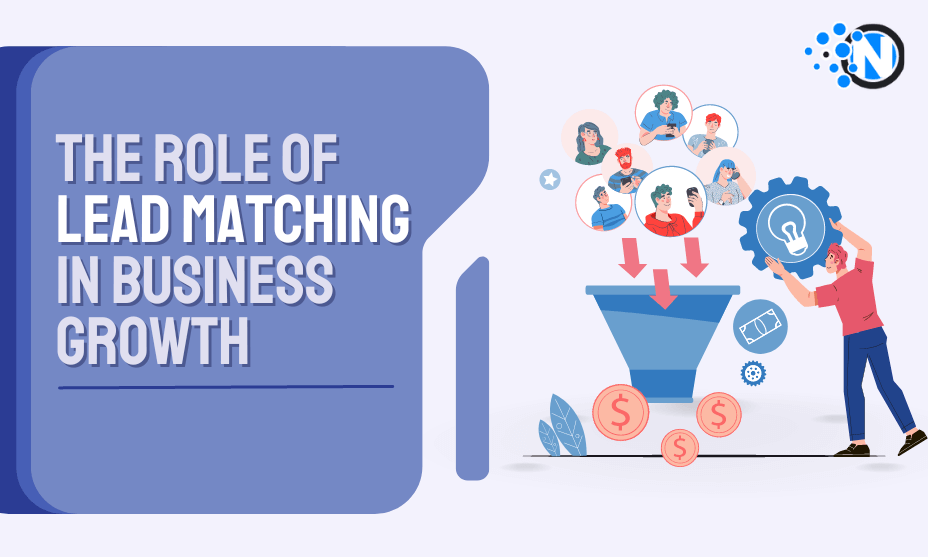Maximizing Revenue: The Role of Lead Matching in Big Firm’s Growth

Big firms have realized that not all leads are created equal.
The key lies in identifying and prioritizing the leads with the highest potential to become loyal customers. This is where the art of lead matching, with its powerful techniques and data-driven insights, comes into play.
By qualifying leads strategically, these industry giants have mastered the art of streamlining their sales and marketing efforts, which is now resulting in exponential growth for them.
But how exactly do they do it?
Imagine your every customer interaction is personalized; sales teams are focusing their efforts on the high probability leads; marketing messages resonate with each individual’s unique needs; How cool that would be!
This is actually happening—with the help of lead matching.
Big firms, with the help of lead matching, leverage segmentation, score leads, make personalized communications, automate their marketing efforts, enable sales, and analyze data to fuel their expansion.
Let’s understand each of these methods to understand better the role of lead matching in a big firm’s growth and how you can apply the same in your business.
Lead Segmentation
One of the key strategies employed by large firms is lead segmentation. Rather than treating all leads the same, they categorize leads into different segments based on various criteria such as demographics, firmographics, behavioral data, and engagement level. By segmenting leads, companies gain a deeper understanding of their target audience and can tailor their marketing messages and strategies accordingly. This personalization increases the chances of resonating with leads and driving conversions.
For instance, a large software company may segment its leads based on factors such as company size, industry, and job role. This enables them to craft targeted messages highlighting the benefits and solutions most relevant to each segment. When aligning their messaging with different segments’ unique pain points and goals, firms significantly improve lead engagement and close more deals.
Read Also: 11 Best Practices for Phone Lead Generation and Follow-ups
Scoring and Prioritization
Lead scoring is another crucial aspect of lead matching. Large firms develop lead-scoring models that assign numerical values or scores to leads based on their attributes, behaviors, and interactions with the company. These scores reflect the likelihood of a lead converting into a customer. Leads with high scores exhibit qualities indicative of strong buying intent and must be prioritized.
Lead scoring models consider factors such as website visits, content consumption, email engagement, social media interactions, and even offline activities like attending events or requesting product demonstrations.
If a lead has visited the pricing page multiple times, downloaded a whitepaper, and engaged with sales representatives through email, they are likely to receive a higher lead score. Sales teams can then focus their efforts on leads with higher scores and send the leads with low scores to the nurturing teams.
Personalized Communication
Effective lead matching enables large firms to deliver personalized and targeted communication to their leads. After analyzing data and understanding their preferences, interests, and pain points, companies tailor their messaging so that it resonates with each lead. Personalization goes beyond simply addressing a lead by name; it involves crafting messages that address their specific needs and challenges.
For instance, an e-commerce company may use lead-matching data to send customized product recommendations based on a lead’s browsing history or purchase behavior. This personalized approach shows clients that you care about them and know their requirements. Research shows personalized emails have significantly higher open and click-through rates than generic mass emails.
Utilizing lead matching, large firms nurture leads with personalized content, making them more receptive to their offerings and increasing their sales figure.
Marketing Automation
Lead matching is often integrated with marketing automation tools; it allows big organizations to automate and streamline their lead nurturing and follow-up process. Marketing automation platforms enable companies to create automated workflows based on lead scoring and segmentation criteria. These workflows trigger specific actions such as personalized emails, follow-up tasks, and content delivery based on a lead’s behavior or current status.
Marketing automation saves time and ensures consistent and timely engagement with leads. For example, when a lead reaches a certain lead score threshold, the system can automatically notify a sales rep to reach out for a personalized conversation.
Automating routine tasks and delivering the right content at the right time helps companies nurture leads more efficiently and effectively with less effort.

Sales Enablement
With the help of lead matching, companies empower their sales teams to take a tailored approach and prioritize their efforts. Armed with lead scoring data and other relevant information, sales reps can engage in more meaningful conversations and deliver personalized sales pitches rather than generic sales scripts.
Let’s say a lead has shown a high level of engagement with educational content. A sales representative can focus on highlighting the product’s advanced features and capabilities. Conversely, if a lead has exhibited limited engagement, the sales rep can start with a more introductory approach.
It improves the lead score and enhances the overall customer experience and builds a strong relationship with the potential customer. This relationship results in repeat businesses and referrals which is a very powerful sales strategy in the long term.
Data analysis and optimization
Large organizations rely heavily on data, and lead matching provides valuable data about their leads. By continuously analyzing data, they can identify patterns, trends, and areas for improvement. For instance, they can evaluate the performance of different lead sources, campaigns, and messaging strategies to determine which channels are driving the highest-quality leads and the most conversions.
With data-driven insights, companies can allocate their resources effectively, invest in high-performing channels, and refine their strategies to optimize lead generation and qualification. They also use analytical tools and conduct regular A/B testing to make better decisions to drive sustained growth.
Conclusion
Lead matching is a powerful strategy that allows large firms to maximize their resources, improve conversion rates, and drive substantial growth.
Companies use lead matching for various strategies, from lead segmentation to analyzing data. These strategies enable firms to focus on high-quality leads, nurture them effectively, and close deals more efficiently.




